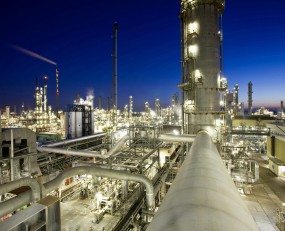
Monday’s explosion at a loading pier at BASF’s Ludwigshafen site is a reminder of the continuing danger of chemical logistics.
The explosion appeared to be caused by a small fire at one of the river terminals that feed raw materials into the large chemical plant. It is reported that this harbour handles naphtha and other gaseous hydro-carbon products, storing them in a bulk tank complex. However, BASF stated that the fire occurred in neighbouring ethylene and propylene pipelines. These two chemicals are basic feed-stocks used extensively in the production of polymers and are moved around the site by pipeline.
The explosion killed two men, members of the BASF fire-service and another is missing. A further 25 people are suffering from serious or minor injuries. The resulting fire continued for several hours, only being extinguished on Tuesday (18/10) morning.
Both land and river logistics have been interrupted and the Ludwigshafen site is short of raw materials, closing the steam-crackers that are at the heart of the plant, as well as much of the rest of the production facility.
The Ludwigshafen site was established towards the end of the nineteenth century and is an anachronism in a bulk chemical sector that largely utilises deep sea port locations which can exploit cost effective logistics. However, the Southern German location remains one of the largest chemical production locations in the world and is a major user of road, rail and river transport services.
It also has a grim record of accidents, most involving logistics. In 1920 a silo complex blew-up killing 500, whilst in 1948 a rail tanker-wagon exploded killing 207.
If you would like to know more about chemical logistics, you may be interested in learning more about Ti’s GSCi portal.
Source: Transport Intelligence, October 19, 2016
Author: Thomas Cullen